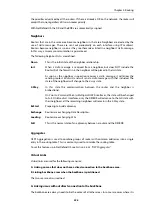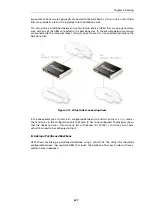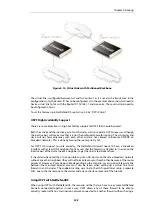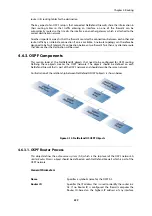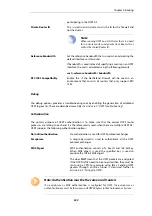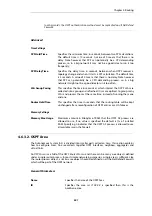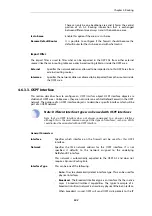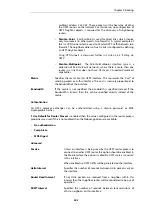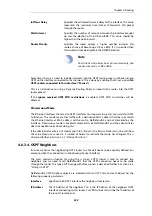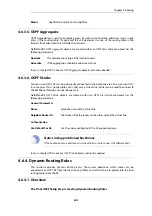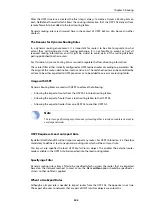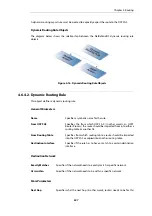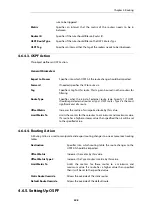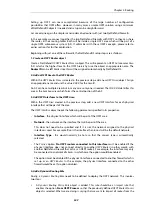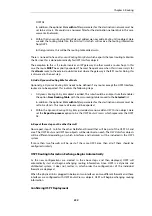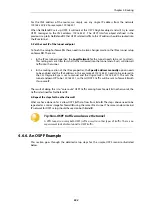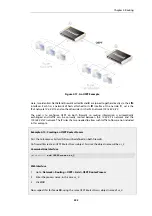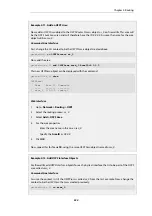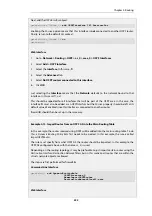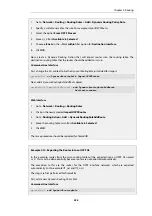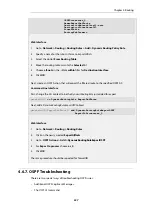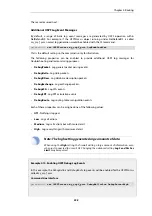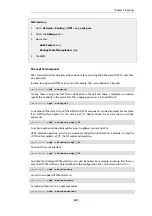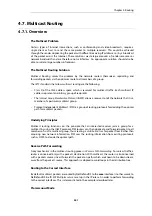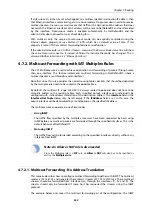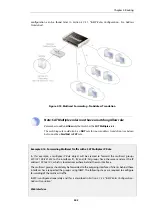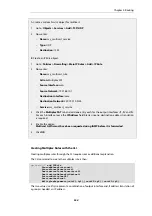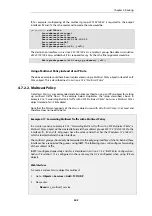
OSPF AS.
In addition, the optional Or is within filter parameter for the destination network must be
set to be
all-nets
. We could use a narrower filter for the destination network but in this case
we want all networks.
ii.
Within the
Dynamic Routing Policy Rule
just added, we now add a
Routing Action
object. Here
we add the routing table into the
Selected
list which will receive the routing information
from OSPF.
In the typical case this will be the routing table called
main
.
There is no need to have a
Dynamic Routing Policy Rule
which exports the local routing table into
the AS since this is done automatically for
OSPF Interface
objects.
The exception to this is if a route involves an ISP gateway (in other words, a router hop). In this
case the route MUST be explicitly exported. The most frequent case when this is necessary is for
the all-nets route to the external public Internet where the gateway is the ISP's router. Doing this
is discussed in the next step.
5. Add a Dynamic Routing Rule for all-nets
Optionally, a
Dynamic Routing Rule
needs to be defined if any routes except the OSPF Interface
routes are to be exported. This involves the following steps
i.
A
Dynamic Routing Policy Rule
object is added. This rule should be an
Export
rule that enables
the option From Routing Table with the
main
routing table moved to the Selected list.
In addition, the optional Or is within filter parameter for the destination network must be
set to be
all-nets
. This means all routes will be exported.
ii.
Within the
Dynamic Routing Policy Rule
just added, we now add an
OSPF Action
object. Here
set the Export to process option to be the
OSPF Router Process
which represents the OSPF
AS.
6. Repeat these steps on the other firewall
Now repeat steps 1 to 5 for the other NetDefend Firewall that will be part of the OSPF AS and
area. The
OSPF Router
and
OSPF Area
objects will be identical on each. The
OSPF Interface
objects
will be different depending on which interfaces and networks will be included in the OSPF
system.
If more than two firewalls will be part of the same OSPF area then all of them should be
configured similarly.
OSPF Routing Information Exchange Begins Automatically
As the new configurations are created in the above steps and then deployed, OSPF will
automatically start and begin exchanging routing information. Since OSPF is a dynamic and
distributed system, it does not matter in which order the configurations of the individual
firewalls are deployed.
When the physical link is plugged in between two interfaces on two different firewalls and those
interfaces are configured with
OSPF Router Process
objects, OSPF will begin exchanging routing
information.
Confirming OSPF Deployment
Chapter 4: Routing
350
Summary of Contents for NetDefendOS
Page 30: ...Figure 1 3 Packet Flow Schematic Part III Chapter 1 NetDefendOS Overview 30 ...
Page 32: ...Chapter 1 NetDefendOS Overview 32 ...
Page 144: ...Chapter 2 Management and Maintenance 144 ...
Page 284: ...Chapter 3 Fundamentals 284 ...
Page 392: ...Chapter 4 Routing 392 ...
Page 419: ... Host 2001 DB8 1 MAC 00 90 12 13 14 15 5 Click OK Chapter 5 DHCP Services 419 ...
Page 420: ...Chapter 5 DHCP Services 420 ...
Page 573: ...Chapter 6 Security Mechanisms 573 ...
Page 607: ...Chapter 7 Address Translation 607 ...
Page 666: ...Chapter 8 User Authentication 666 ...
Page 775: ...Chapter 9 VPN 775 ...
Page 819: ...Chapter 10 Traffic Management 819 ...
Page 842: ...Chapter 11 High Availability 842 ...
Page 866: ...Default Enabled Chapter 13 Advanced Settings 866 ...
Page 879: ...Chapter 13 Advanced Settings 879 ...

